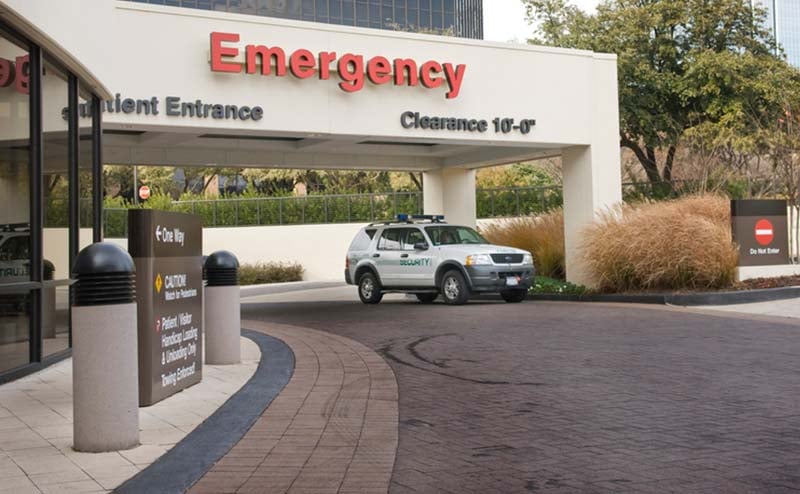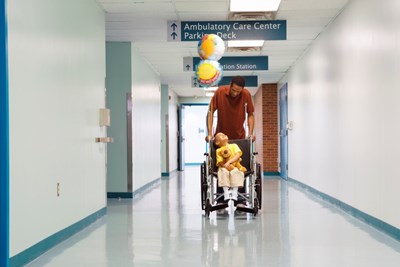An August 2022 survey of emergency physicians from the American College of Emergency Physicians (ACEP) shows that violence in the emergency department (ED) is on the rise and is increasing rates of health care worker burnout and harming patient care.
85% of emergency physicians believe the rate of violence experienced in emergency departments has increased over the past five years, with 45% indicating it has greatly increased.
- Two-thirds of emergency physicians report being assaulted in the past year alone (66%), while more than one-third of respondents say they have been assaulted more than once.
- One-third of emergency physicians who were assaulted resulted in an injury, an increase of 6% since 2018.
- The number of emergency physicians who missed part of or their entire shift has increased by 50% since 2018.
Assaults are on the rise with nearly a quarter (24%) of emergency physicians reporting being assaulted multiple times a week (up from 8% in 2018).
- Patients committed nearly all assaults (98%) against emergency physicians. Additionally, three in ten assaults (31%) were committed by family or friends of the patient being treated.
- The most common types of assaults are as follows:
- Verbal assault, with threats of violence (64%)
- Hits or slaps (40%)
- Spit on (31%)
- Kicked (26%)
- Punched (25%)
Emergency physicians report psychiatric patients and those seeking drugs or under the influence of drugs or alcohol are most often responsible for the assaults experienced (42% and 40%, respectively).
According to emergency physicians, the lack of punitive consequences has become a larger factor in the rise of violence since 2018.
- Many emergency physicians indicated the hospital’s reaction is minimal: escorting the patient off property, restraining the patient, or in many cases, no action at all.
- When administration does get involved, physicians note it is often to de-escalate the situation in a way that appeases the family or patient, and not the physicians or staff.
- The most common response was to make a note in the patient’s chart (29%) and only 2% of hospital security pressed charges.
The full impact of violence against healthcare workers is understated because many incidents are never reported.
- Many health care workers decline or are encouraged not to report assaults for a variety of reasons and leaving most assailants not held accountable.
COVID-19 has had a chilling effect on the levels of trust and has heightened violence between patients, the care team, and staff.
- Two-thirds of emergency physicians (66%) believe COVID-19 has increased the amount of violence in emergency departments.
- Nearly seven in ten (69%) emergency physicians say that COVID-19 has decreased the level of trust between patients and physicians or emergency department staff.
Nearly nine in ten emergency physicians agree violence in the emergency department harms patient care (89%), a 12-percent increase from 2018.
- More than eight in ten emergency physicians say ED violence has resulted in an increase in wait times (85%).
- 60% of emergency physicians report these attacks often result in patients leaving the emergency department without being seen or treated by a doctor.
Violence in emergency departments is exacerbating the already high rates of healthcare worker burnout and impacting their mental health.
- 87% of emergency physicians report a loss of productivity from the physician or staff as a result.
- 85% of emergency physicians report emotional trauma and an increase in anxiety because of ED violence.
Emergency physicians and their care teams deserve a support system that prevents these incidents and protects them when they occur.
- The American College of Emergency Physicians (ACEP) and the Emergency Nurses Association have partnered since 2018 on the No Silence on ED Violence campaign to raise awareness, advocate for policy changes and strengthen protections for frontline workers.
ACEP is addressing these trends and advocating on behalf of emergency physicians and their care teams so they can focus on saving lives, without fearing for their personal safety.
- Physical violence, intimidation and threats are not accepted in any other workplace, and they should not be allowed or tolerated in a health care setting.
- Emergency departments should be a safe space where patients are guaranteed they have the full attention and dedication of their care team to treat their ailments.
*Methodology: These results are the product of a series of polls conducted by Marketing General Incorporated on behalf of ACEP between July 25 and August 1, 2022, among a sample of 2,712 emergency physicians to better understand their experiences regarding the level, type, frequency, and impact of violence experienced in the emergency department. Providing a response rate of approximately nine percent and a margin of error of plus or minus 1.9 percent.
 American College of Emergency Physicians
American College of Emergency Physicians







